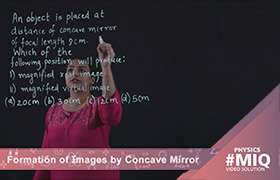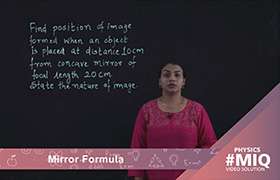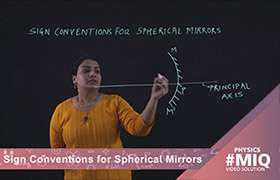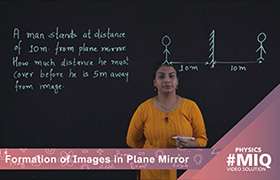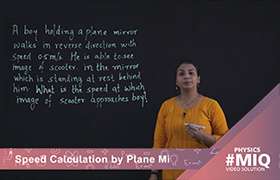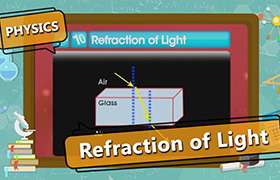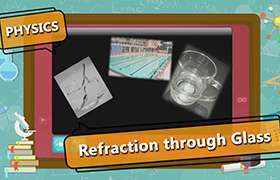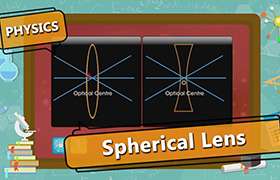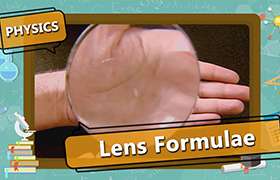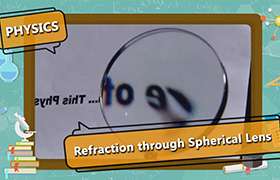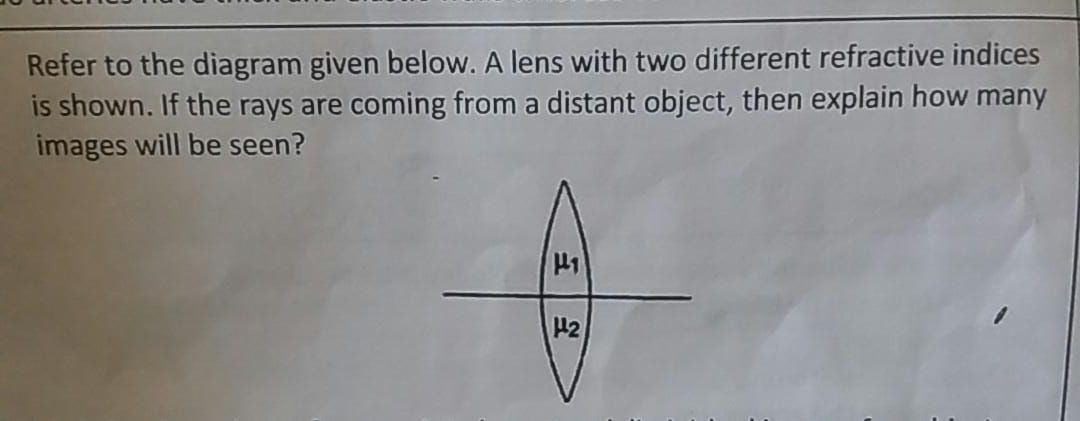CBSE Class 10 Answered
g.b
Asked by PRAMOD | 01 Dec, 2013, 07:55: PM
m = 1/2 (since convex mirrors always form virtual images)
u = - 60 cm.
We know,
m = -v/u
=> 1/2 = -v / - 60 => v = 60/2 = 30 cm
Also, according to the mirror formula,
1/f = 1/v + 1/u
=> 1/f = 1/30 - 1/60
=> 1/f = (2-1)/60
=> 1/f = 1/60 => f = 60cm
So, the focal length of mirror is 60 cm.
Now, we are given that m = 1/3
m = -v/u
=> 1/3 = -v/u => v = -u/3
According to mirror formula,
1/f = 1/u + 1/v
=> 1/60 = 1/u - 3/u
=> 1/60 = -2/u
Therefore, u = -2 * 60 = -120 cm
Therefore, required distance of the object to produce a magnification of 1/3 is 120 cm.
Answered by Komal Parmar | 02 Dec, 2013, 12:45: AM
Application Videos
Concept Videos
CBSE 10 - Physics
Asked by agankitgupta938 | 18 Apr, 2024, 04:29: PM
CBSE 10 - Physics
Asked by infinityupgraded | 13 Apr, 2024, 08:17: AM
CBSE 10 - Physics
Asked by suryamr2019 | 08 Mar, 2024, 04:32: PM
CBSE 10 - Physics
Asked by saurabhjd527 | 30 Jan, 2024, 07:55: PM
CBSE 10 - Physics
Asked by subrasixty | 13 Jan, 2024, 05:05: PM
CBSE 10 - Physics
Asked by nandanagnair | 17 Dec, 2023, 03:44: PM
CBSE 10 - Physics
Asked by namish1088 | 16 Nov, 2023, 08:09: PM
CBSE 10 - Physics
Asked by 0 0 | 19 Oct, 2023, 03:51: PM
CBSE 10 - Physics
Asked by bubbynaik77 | 29 Sep, 2023, 09:34: PM
CBSE 10 - Physics
Asked by gurcharansingh37306 | 10 Sep, 2023, 12:53: PM

